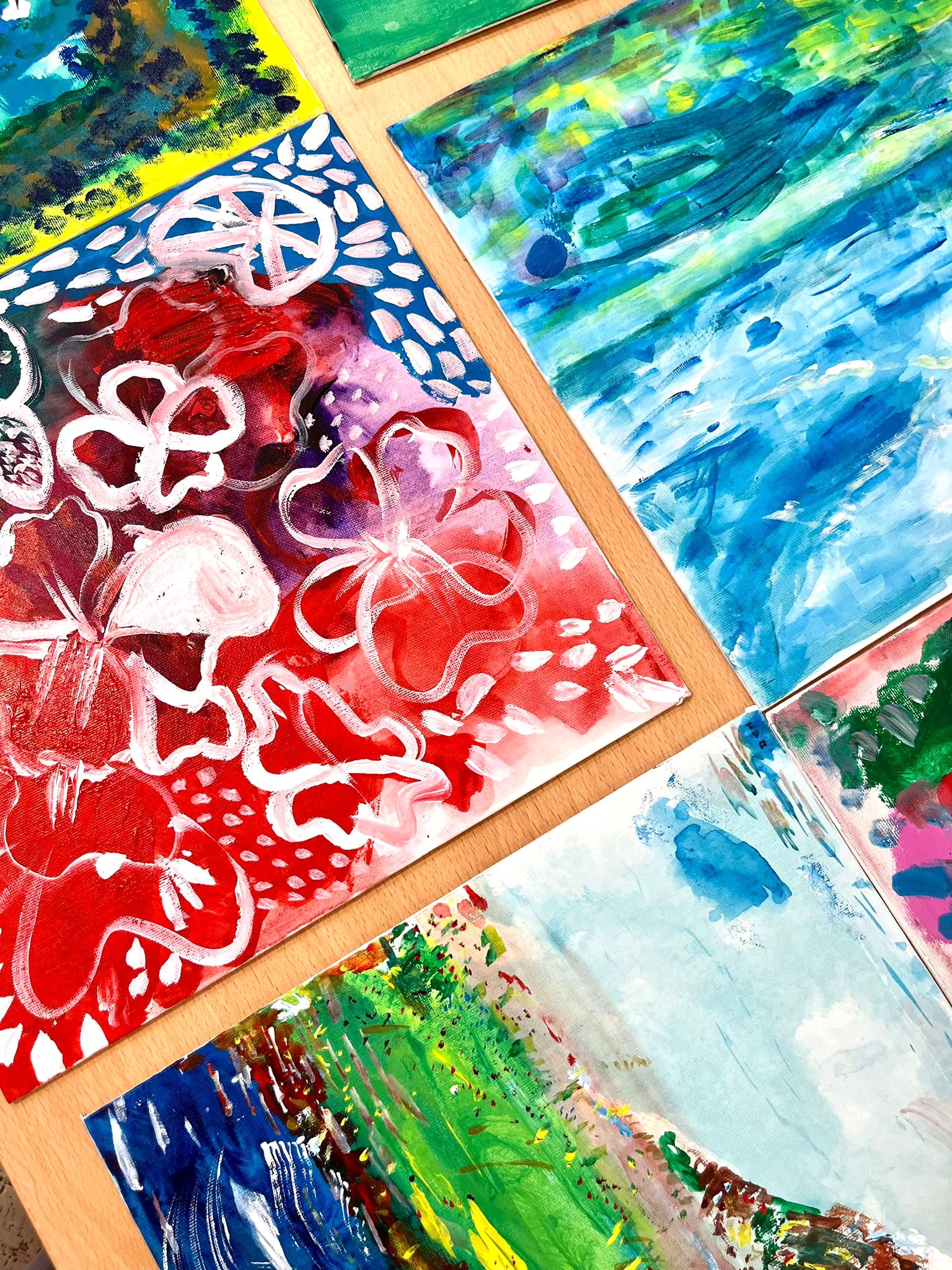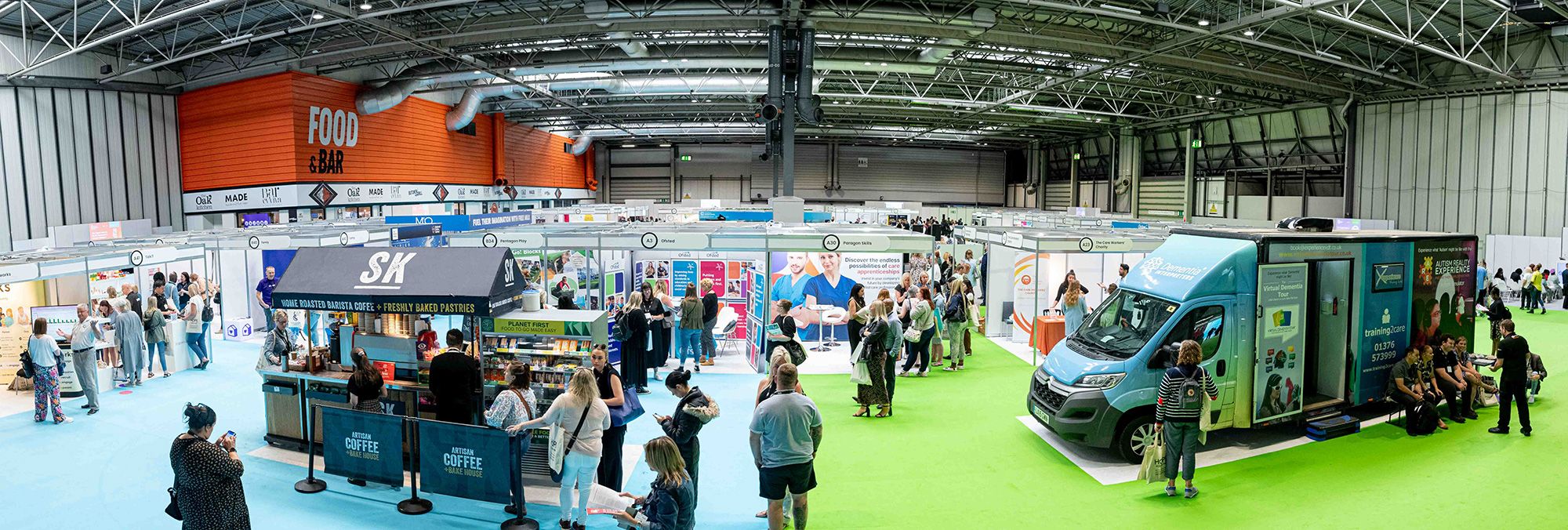The benefits of art in care homes: Transforming lives in dementia
)
Art, in all its beautiful forms, has long been a tool for self-expression and human connection. In my work as a Resident Artist at Loveday, I witness first-hand the incredible benefits that art can bring to individuals living in care homes, especially those living with dementia.
Engaging in creative activities is much more than just completing a task or passing the time, it offers a profound and meaningful way to improve quality of life. Through tactile and sensory experiences, creating networks and providing a sense of achievement, art serves as a bridge to connection and expression that transcends the limitations of memory loss.
Tactile engagement: Connecting through touch
For people living with dementia, communication barriers can often leave them feeling isolated or misunderstood, especially for those who have lost their ability to speak. However, the language of art is universal, and many individuals respond powerfully to tactile stimuli. Engaging with different textures, whether it's artisan papers, embroidered fabric or diluted paint, can be incredibly grounding. These tactile experiences stimulate areas of the brain that aren’t reliant upon memory, offering moments of focus, comfort and calm.
Tactile engagement is particularly important because it taps into an individual’s sensory memory, which often remains intact even as other cognitive functions decline. For example, manipulating collage or feeling the bristles of a paintbrush can evoke emotions or memories that words alone might not. I’ve seen people who have difficulty with verbal communication light up as they work with their hands, their body language softening and their engagement increasing. These small moments of joy are immensely valuable for both the individual, the care team and also their loved ones, who enjoy seeing and hearing about their accomplishments and freedoms of expression during these creative experiences.

The power of sensory stimulation
Art also provides a rich multi-sensory experience, stimulating sight, touch and sometimes even smell and sound, depending on the materials used. For individuals living with dementia, who may be experiencing sensory changes or impairments, creative activities can help reawaken the senses in gentle, non-invasive ways. Colours, shapes and patterns offer visual stimulation that can evoke emotional responses, while the act of creating something tangible helps reinforce a sense of the present moment.
Through my workshops, I often introduce specific colour combinations and engaging scents, such as lavender-infused paper or bespoke handling packs, which can provide a calming influence. The sensory aspect of art goes beyond the final piece—it's about the experience of storytelling and process of creation itself. The sensations of mixing paint or crumpling paper can be therapeutic, helping to reduce anxiety and agitation, common symptoms in people living with dementia.
A sense of achievement
One of the most impactful benefits of art and its therapeutic qualities is the sense of achievement it can offer. Dementia can take away independence which can be hugely frustrating for the individual, and day-to-day tasks can become sources of irritation or confusion. However, art is empowering. It doesn’t have rules, limitations or expectations. This liberation allows participants to express themselves without fear of making a mistake, which promotes confidence as well as forms an ongoing safe space and association with a sense of discovery. It is inclusive and hugely important.
I’ve seen individuals take immense pride in their work, even if it’s as immediate as a splash of paint on a canvas. It’s the process that matters – the act of creating something from nothing and being in the moment. The feeling of embracing play and really going for it gains momentum and impact over time. A sense of accomplishment is vital, especially for those who may struggle to find it elsewhere in their daily routines. Art has many transferable skills that then filter into other daily experiences. At Loveday, we take pride in celebrating their creations, displaying artworks on walls, showing them to friends and family and even making art as gifts. This reinforces their value and capabilities, reminding them and those around them that they still have much to offer.

Creating connections and sparking conversations
Art in care homes serves as a communal experience that creates meaningful connections between residents, staff and family members. The shared act of creating, whether through group projects or working side by side, encourages conversation and interaction, providing opportunities for people to connect. Even when verbal communication becomes challenging, sharing colours in other ways, exploring the contours of shapes or being in the company of the creative process itself can spark memories and emotions, offering new ways to engage. I have also observed lots of fun artistic competition between residents… Laughter is key and infectious!
The social engagement that art offers often leads to conversations and engagement that goes far beyond the artwork itself, sparking the sharing of life experiences, personal stories and cherished memories. These connections provide comfort and reduce loneliness, reminding individuals that they are still part of a larger social fabric, despite the challenges they face.
Transformative power of creativity
At Loveday, we believe in the transformative power of creativity, and I see how art enhances the lives of all who participate. Through the powerful act of creating, residents can rediscover a part of themselves, or even discover something new leaving behind a legacy of beauty, both in their work and in the relationships they nurture through the process.

